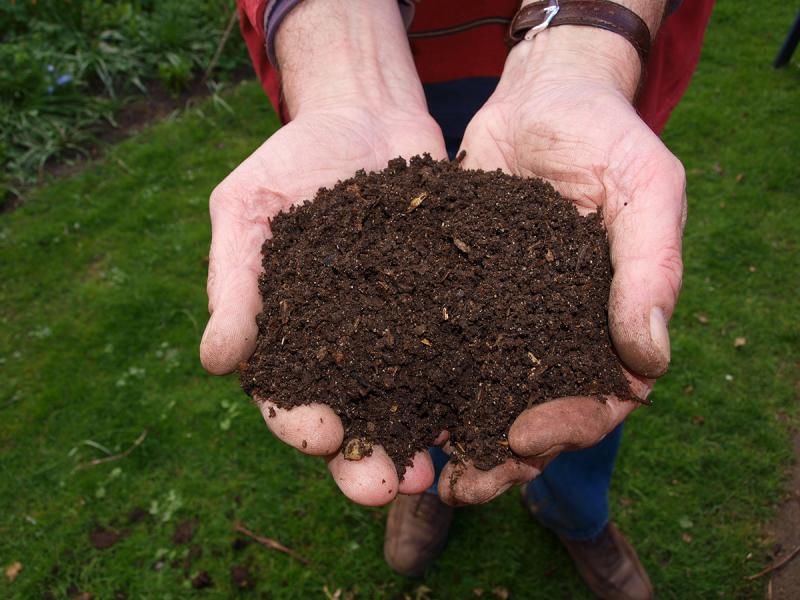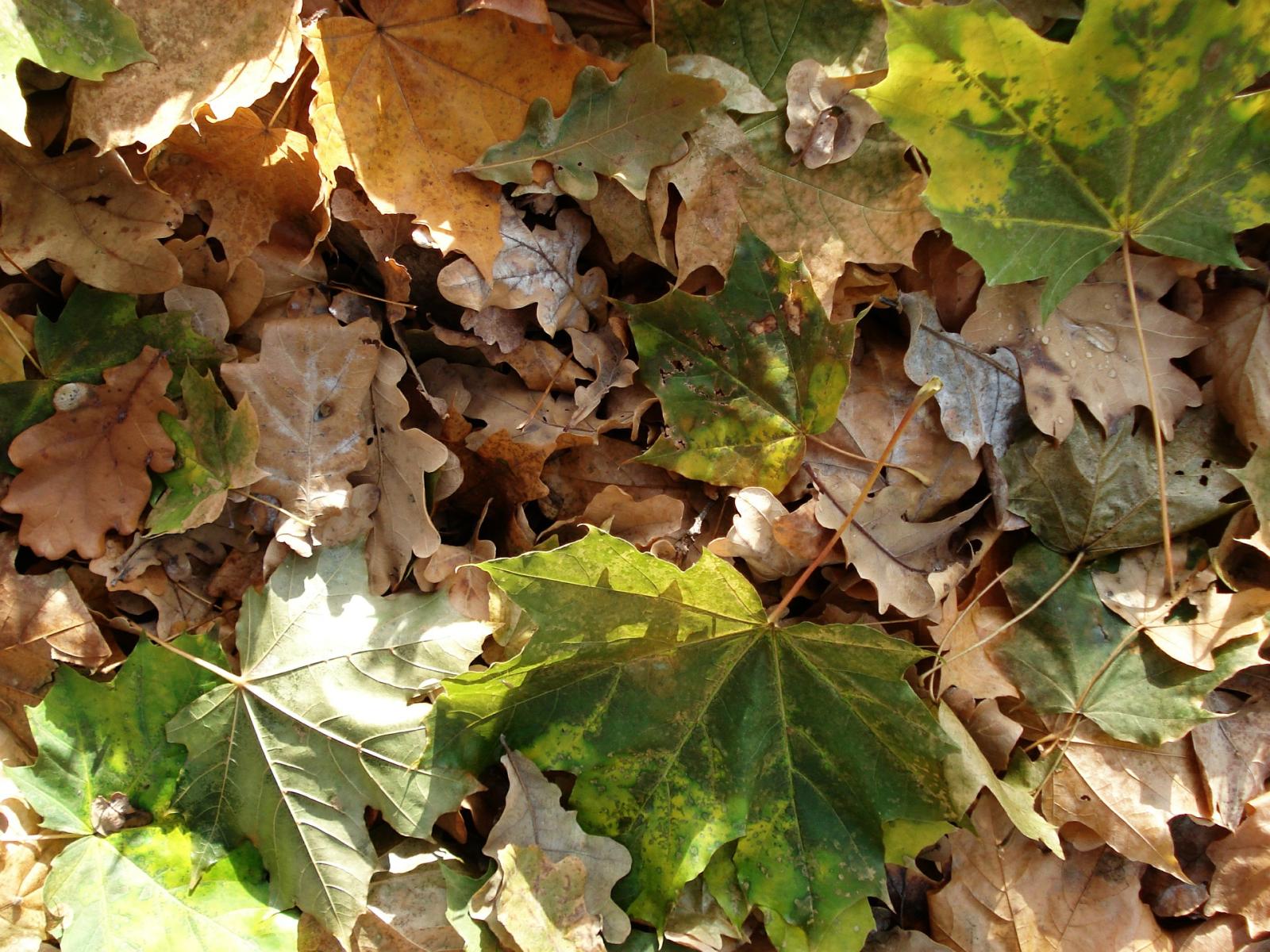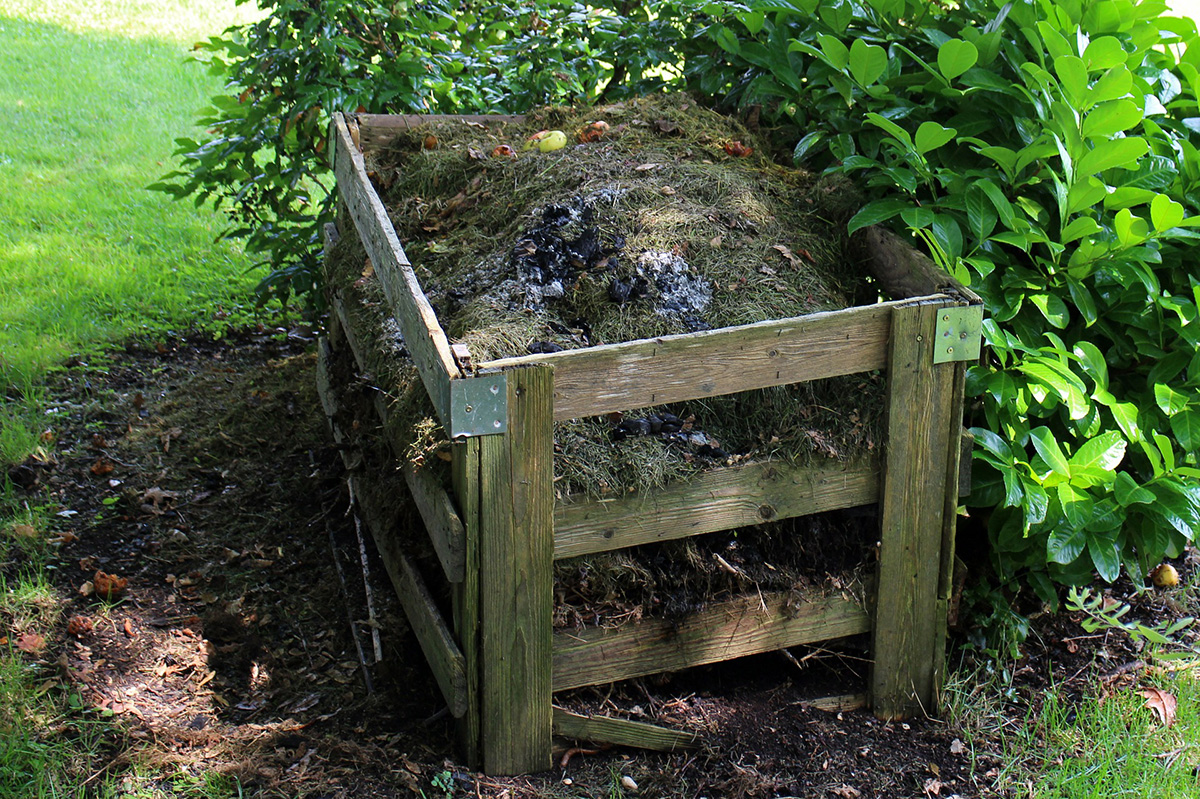
Beginning in late summer, most gardeners have an abundance of landscape waste; whether it's dead plants from vegetable gardens or ornamental beds, foliage and branches from pruning trees and shrubs, or fallen tree leaves. Why not make use of these great organic materials, instead of piling them into bags and hauling them off to the landfill? You can easily turn them into nutrient-rich compost to use in your gardens next year.
Composting is a great way to recycle garden waste and reduce the money spent on trash disposal and store-bought fertilizer.
 Benefits and Components of Compost
Benefits and Components of Compost
Compost is a mixture of decomposed plant materials and other organic waste that has many benefits for the home landscape. It improves the water holding capacity of sandy soils, improves the aeration of clay soils and provides plant nutrients. Decomposition can take one month to two years, depending on how actively the pile is managed.
What materials can be used in a compost pile? Yard waste like leaves, grass clippings and plant trimmings can be composted, as well as kitchen waste such as vegetable and fruit peelings, coffee grounds and egg shells. Branches and twigs larger than one-quarter inch in diameter should be put through a shredder or chipper to enable faster breakdown. Household items like newspaper and cardboard can also be composted.
What materials should not be added to a compost pile? Meat, bones, grease and dairy products should not be composted because they attract wildlife pests. Also, do not add heavily diseased plants or weeds with many seeds. Disease organisms, like fungal spores or bacteria, and weed seeds may not all be killed during the composting process. Meaning they would still be active in the finished compost and cause a problem for plants when the compost is added back to a vegetable garden or landscape bed.
 Creating a Compost Pile
Creating a Compost Pile
Compost piles can be made using a variety of structures, but the pile must be large enough to hold heat and small enough to admit air to its center. Ideally, each pile should be 3 to 5 feet tall and wide.
To build a compost pile, set 4 to 6 inches of chopped brush or coarse material over the soil. This allows air to circulate underneath the pile. Add a three to four inch layer of damp, low-carbon (green colored) organic material, such as grass clippings, on top. Follow this with a 4 to 6 inch layer of high-carbon (brown colored) organic material. Both of these layers should be damp, so add water if necessary. Finally, add a 1-inch layer of garden soil or finished compost. This last layer introduces the microorganisms needed to break down the organic matter. Mix these layers together. Then add more materials to the pile in additional layers.
For the quickest decomposition, remix the pile about once a week. Move materials previously on the top and sides of the pile to the center. Add water as needed to keep the pile damp. The temperature will quickly reach more than 100 degrees Fahrenheit, but the pile will eventually cool off and decrease to about one-third of its original volume. The compost will be dark, crumbly and earthy smelling.
Passive Composting
For those who don't have the time or energy to frequently turn a compost pile, passive composting is the best way to go. Materials are added to the compost pile or structure as needed. Mix them lightly and add water if the materials are dry. Then allow them to sit. The pile won't heat up as it does with active composting, but they will slowly decompose. Additional materials may be added to the top as needed.
Don't need to worry about the carbon:nitrogen ratio. Aiming for the recommended 30:1 ratio speeds decomposition in actively managed compost, but isn't critical in passive systems. The materials will decompose even if the carbon:nitrogen ratio is not ideal.
After about a year, harvest finished compost from the bottom of the pile, even if materials at the top of the pile has not yet begun to break down.
Composting Tumblers
If only a small amount of material is available for composting or you want to have finished compost very quickly, consider a composting tumbler. You can either purchase a tumbler or build one using a 55-gallon drum. A tumbler is more expensive than many other types of composting structures, but they make turning the compost quick and easy. Once loaded with material, a tumbler will return finished compost in as little as two weeks if turned daily. The tumbler must have holes for water drainage and air circulation. Fill the unit 3/4 full with material, using a 30:1 ratio of high carbon to high nitrogen materials. Keep the materials moist during composting and do not add new materials until composting is completed.
For more information
Images from Pixabay.com.
- Fall leaves are a good high carbon or "brown" component for addition to a compost pile.
- Composting can be done successfully in many different types of structures, such as this wooden bin, or in a free-standing pile.